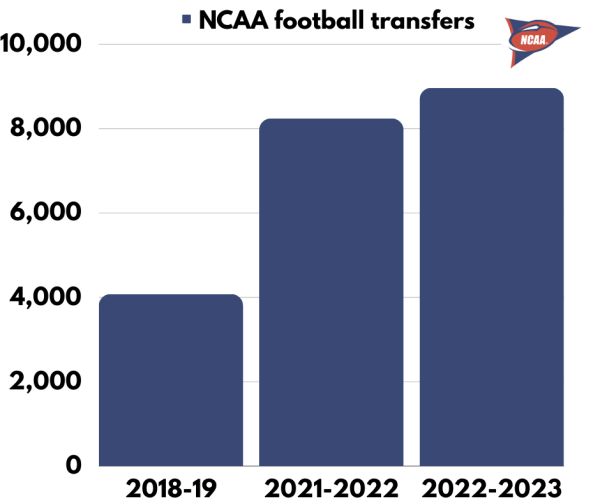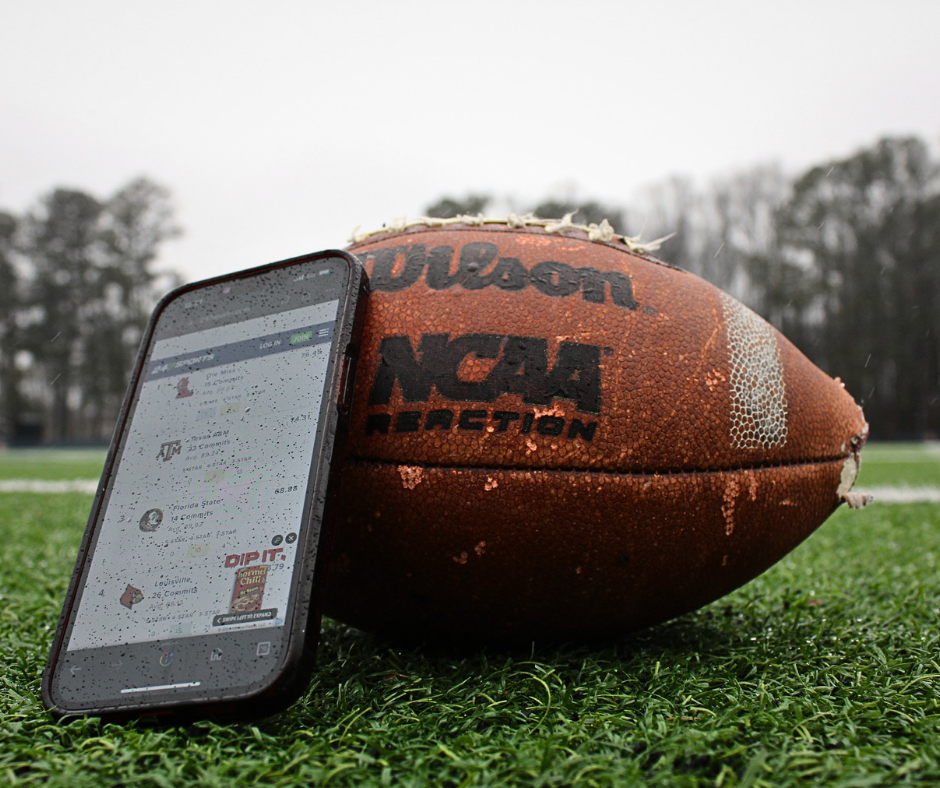With the college football season coming to a close, several lingering questions arise around the new playoff format, the potential rise of superconferences and the future of the National Collegiate Athletic Association (NCAA) altogether. Looming at the center of this drama rests a controversial shift in college sports culture: the transfer portal. A decision enacted almost entirely with football at the forefront has plagued hundreds of athletic departments around the country. This year marked the creation of a new window system, reducing the 60-day transfer period from past years to 45 days. The revamped portal has proceeded to change the landscape of college sports entirely and has left a worrisome crack in the future for collegiate athletics, especially football.
The NCAA created the portal in 2018 to provide an open space for athletes to take greater control of their future destinations and careers, and since the change, the number of recruits in the portal has increased yearly. In 2022, 20,911 student-athletes entered the portal, a 15% increase from the year prior. From August 2018 to January 2019, 2,405 college football players entered the portal. December 2022 alone produced 2,729 players on the transfer list. The transfer portal sits tall as another representation of the new culture in college sports. Players can now capitalize on and determine the outcomes of their careers through both the transfer portal and the 2021 introduction of name, image and likeness contracts (NIL). These two developments substantially shifted how schools and players reach recruiting decisions. NIL undoubtedly provided players with their well-deserved right to cash in on their talents. Despite these benefits, the money-driven and now-or-never attitude of today’s athletes can completely alter the players’ careers and hurt an entire team’s success.

“Players are expanding their options, especially with NIL deals and all that. They now see what options they have out there…Honestly, I feel like the aspect of loyalty has gone away. A player doesn’t get enough playing time in the game and he enters the transfer portal. As a fan, it’s heartbreaking to watch your favorite team and the transfer portal just takes that all away,” magnet sophomore Ire Fajmi said.
This season, football alone produced 532 transfers on the first day the portal opened, the highest number in college football history. The portal opened up at a vital time for football squads, especially bowl game and playoff contenders. Florida State University (FSU), a team that fans argue should have made the four-team playoff, witnessed the impact of transfers firsthand. FSU lost 16 players to the transfer portal before their December 30 matchup against the Georgia Bulldogs in the Capital One Orange Bowl. Both teams entered the game hoping to prove they deserved to play in the College Football Playoff for a national championship. Among FSU’s transfer list sits the name of their starting quarterback, Tate Rodemaker. Rodemaker entered the portal under tight pressure to submit his name by the January 2 deadline. His absence would lead to the historic 63-3 beatdown from Georgia, as FSU found themselves forced to start freshman quarterback Brock Glenn.
After the game, Georgia head coach Kirby Smart affirmed that the blowout highlighted the problem with college football and the NCAA must “fix this.” Smart observed what fans also concluded, the transfer portal not only tarnishes the pride and loyalty associated with team sports but also directly created one of the saddest blowouts in history.
In FSU’s circumstances, upperclassmen left to receive either playing time or attend a higher-quality football program. However, for teams bringing transfers in, the potential of a younger career may fall flat. While starting positions in football never come guaranteed, especially for underclassmen, the transfer portal has created a noticeable decline in true freshman starters. Less than 3% of true freshman quarterbacks in the 2023 season received starting roles, compared to over 10% in 2021. In fact, nearly one-third of all starting players transferred into their roles.
Teams now use the transfer portal similarly to how professional organizations use free agency. The University of Colorado’s new head coach, Deion Sanders, completely revamped the team’s roster, ousting 56 players and bringing in another 50 through the transfer portal. While Sanders brought a necessary change to the culture at Colorado, the method did not provide the immediate success that the team expected as they fell to a 4-8 record, 1-8 in their PAC-12 conference games.
“Relying on the transfer portal to fill team needs does nothing for any athletic program, it simply serves as a bonus that coaches are starting to rely on a little too much to fill team needs. Plus, it causes some coaches to focus less on pulling recruits out of high schools across the country,” Mississippi State University journalist Elizabeth Keen said.
The transfer portal has become so uncontrollable that early enrollees from the class of 2024 already entered their names in the portal. During their first month of school, University of Alabama quarterback Julian Sayin and University of Washington wide receiver Peyton Waters submitted themselves as transfers.
While these players owe no loyalty to their programs, especially with the shifts in front offices, the constant moving of players in college football has completely altered the meaning behind a commitment. The NCAA obliterated what college football meant to fans, and coaches must buy into the transfer game to succeed. The transfer portal’s endless issues leave behind a concerning future for college football.










